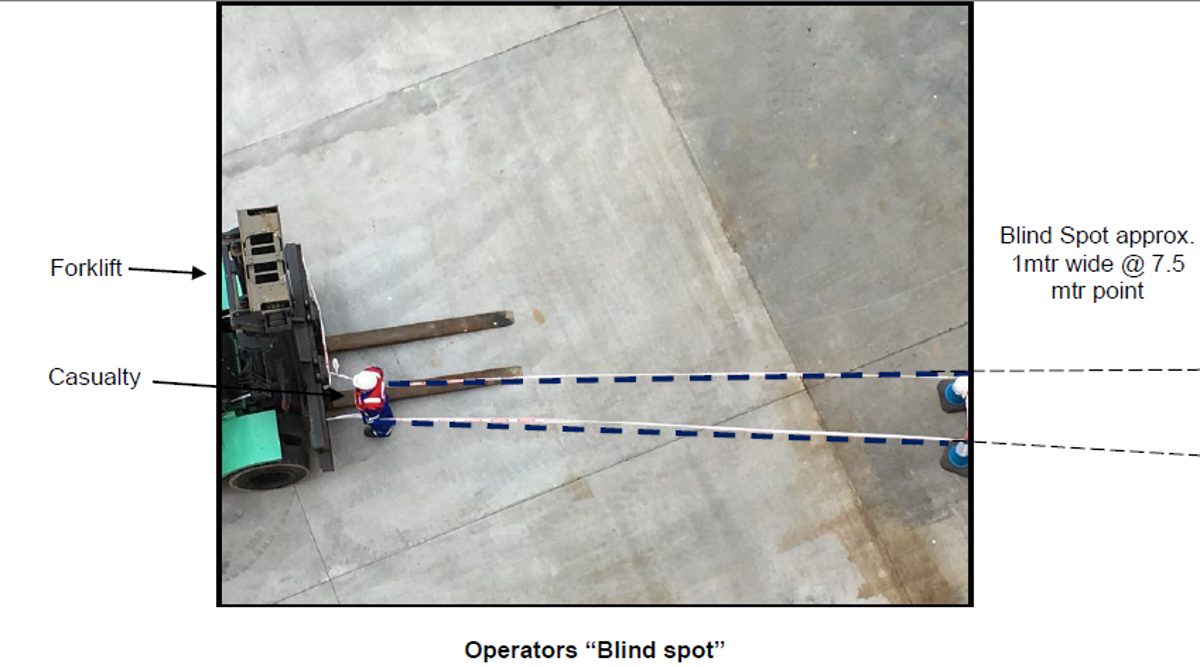Fatality: Crew member struck by forklift during quayside operations
- Safety Flash
- Published on 29 April 2016
- Generated on 15 December 2025
- IMCA SF 11/16
- 2 minute read
Jump to:
A member has reported an incident in which a crew member was struck by a forklift truck during quayside operations, and suffered fatal injuries.
What happened?
The incident happened when a vessel crew member was tasked with unloading stores from a container on the quayside. He descended the vessel gangway and headed towards the containers situated close by. It was during this short excursion that the crew member was struck by a forklift and fatally injured.
The investigation is still ongoing, but initial findings have indicated the following as possible contributory factors:
- Blind spots within the forklift operators field of view from the operating cab.
- Obscured vision due to sunlight.

Our member noted the following:
- This tragedy is a stark reminder that when working near moving vehicles or heavy equipment, persons must remain in the operator’s full view.
- If you can’t see the operator, they won’t be able to see you.
- Remain vigilant at all times around ‘routine’ activities through exercising situational awareness.
- Don’t ‘assume you are safe’, ‘ensure you are safe’.
- During project mobilisation/demobilisation(s) and vessel port calls with/without project activity, focus must continue to be given to the following quayside arrangements:
- traffic management
- designated walkways/segregation from traffic
- crane operations
- landing and loading areas
- vehicle banksman (where required and assessed as not adding risk)
- storage areas
- parking areas
- quayside edge operations and pre-shift briefings/toolbox talks
Our member took the following actions:
- Circulated a safety notice to vessel crews via a scheduled ‘Time Out for Safety’ and to the industry via IMCA.
- Revisit and reassess mobilisation and demobilisation plans, procedures, practices and briefings in light of the above.
- Review all Project Hazard Identification & Risk Analysis (HIRA) and Vessel/Site Risk Assessments to ensure appropriate mitigation and controls are in place.
- Review effectiveness of toolbox talks, supervision and working practices on mobilisation sites.
Related Safety Flashes
-
IMCA SF 04/07
10 May 2007
IMCA Safety Flashes summarise key safety matters and incidents, allowing lessons to be more easily learnt for the benefit of the entire offshore industry.
The effectiveness of the IMCA Safety Flash system depends on the industry sharing information and so avoiding repeat incidents. Incidents are classified according to IOGP's Life Saving Rules.
All information is anonymised or sanitised, as appropriate, and warnings for graphic content included where possible.
IMCA makes every effort to ensure both the accuracy and reliability of the information shared, but is not be liable for any guidance and/or recommendation and/or statement herein contained.
The information contained in this document does not fulfil or replace any individual's or Member's legal, regulatory or other duties or obligations in respect of their operations. Individuals and Members remain solely responsible for the safe, lawful and proper conduct of their operations.
Share your safety incidents with IMCA online. Sign-up to receive Safety Flashes straight to your email.

